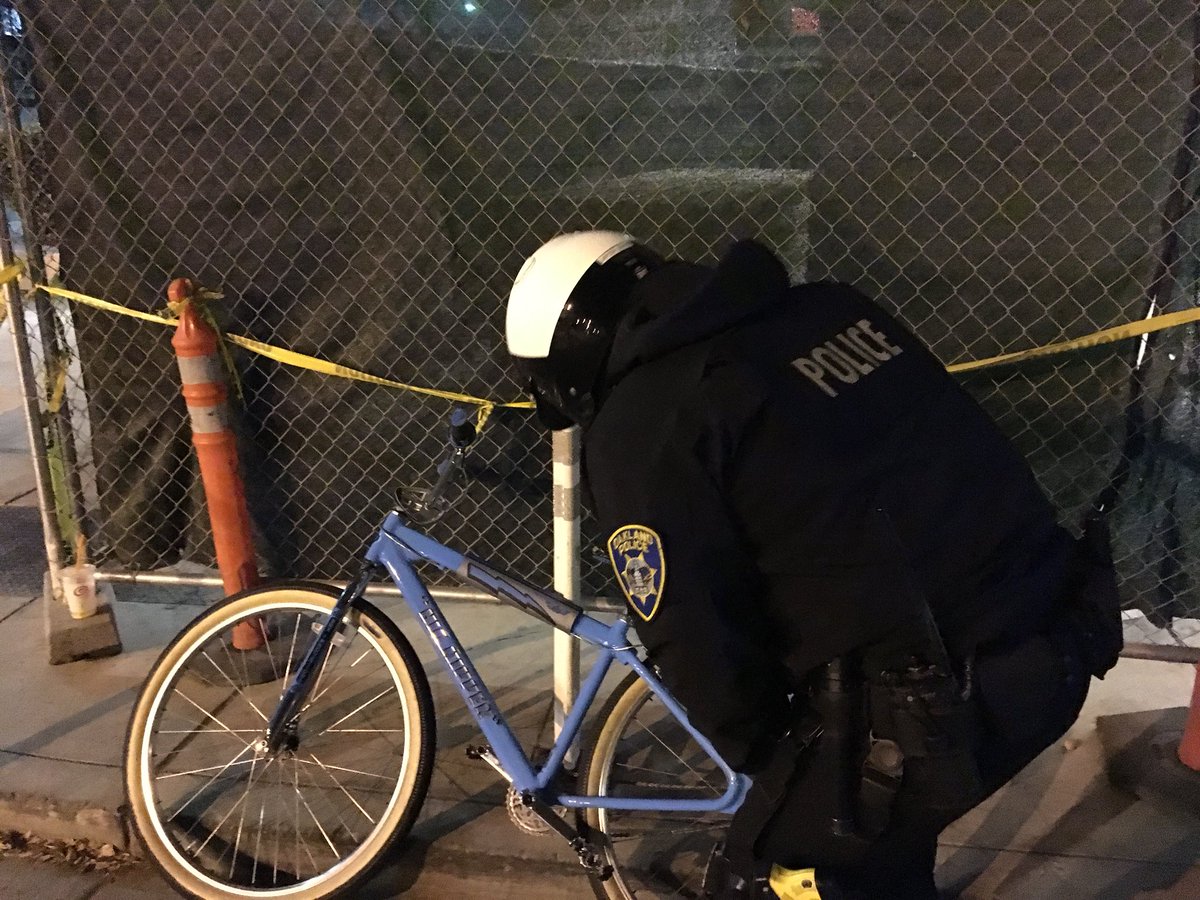Note: GJEL Accident Attorneys regularly sponsors coverage on Streetsblog San Francisco and Streetsblog California. Unless noted in the story, GJEL Accident Attorneys is not consulted for the content or editorial direction of the sponsored content.
“We understand accidents happen but this is an opportunity to make the right choice and turn themselves in,” said Johnna Watson, a spokeswoman for the Oakland police department, as quoted in the San Francisco Chronicle.
Watson was referring to a tragic car crash that occurred on January 2 near the Fruitvale BART station. A 14-year-old boy riding his bicycle was hit by a motorist, in the middle of a sunny, dry day.
The motorist then dragged the boy four blocks before stopping. The driver and a passenger got out briefly, got back in, and left the scene.
That's what the Oakland police call an "accident?" How does one 'accidentally' hit and then leave a boy, his bones smashed, writhing in pain on the asphalt?
Let's give officer Watson the benefit of the doubt; maybe she hoped to coax the perpetrators into turning themselves in by soft-pedaling the consequences.
But just as likely, it speaks to the prevailing attitude that "accidents happen" and are inevitable. Leah Shahum, Founder and Executive Director of the Vision Zero Network, said this is part of a paradigm in which the priority is always about moving cars, rather than keeping people safe. "Whether people want to admit it or not, we've been doing that--sometimes unconsciously in how we design our streets and even how public officials and the police talk about it in the media," she told Streetsblog in a phone interview. "We've got to see leadership from those in the public sphere, acknowledging that these incidents are preventable."
Remember, the Oakland PD officer who flatly refused to enforce basic traffic regulations which are designed to keep our roads safe? Imagine what would happen if we lived in a different culture and every officer, unless on the way to an emergency, stopped and wrote a ticket every time they saw an illegally parked car or moving violation. Imagine what would happen if motorists knew they could lose their driving privileges, pending an investigation and retraining, whenever caught speeding or otherwise putting the public at risk.
In San Jose, where the Mayor was hit and sent to the hospital by an inattentive-at-best motorist at the start of the new year, there were more than 50 traffic deaths in 2018--up from 46 the previous year. And yet, the police only gave the driver a citation for a failure to yield. Even in San Francisco, where the city had celebrated a significant drop in traffic fatalities in 2017, 2018 saw an increase from 20 to 23 deaths. And the streets have already claimed their first victim for 2019.
Some of this increase, no doubt, can be attributed to an active economy and increases in population. But it can also be blamed on developers who talk green but continue to build car-centric communities, compromising on protected bike lanes. It comes to city departments that don't take the safety of vulnerable road users seriously (we're still waiting for San Francisco police to explain why one of its officers found it necessary to speed down a bike lane late last year, endangering cyclists, without lights or sirens).
Projects move forward, but in fits and starts; city agencies never seem to miss an opportunity to water things down and backslide. First, SFMTA tried to cancel the Townsend safety project. It took yet another round of intense pressure from advocates to get it reinstated. But SFMTA decided not to continue the protected bike lane on the north side of the street to the 7th street intersection. Why? "More than 220 vehicles per hour make a right onto 7th. A parking-buffered layout leading into a mixing zone raised safety concerns for people biking due to the sheer volume of right-turning vehicles," wrote agency spokesman Ben Jose, in an email to Streetsblog.

So why not a phased signal? Or a protected intersection? Why a compromise that again throws cyclists back out into heavy car traffic, inviting more conflicts? Isn't the objection really about inconveniencing those "220 vehicles per hour?" Meanwhile, advocates are put in the weird position of having to be thankful for getting any safety project at all.
It's in this climate that SFMTA's Vision Zero page still carries the message:
Calendar Year 2018
Target: Zero traffic fatalities by 2024
Status: NOT MEETING TARGET
"It really is about them shifting their own mindsets," said Shahum, "...about how they prioritize budgets and how they do and design changes, even when there is push-back and opposition."
She sees hope in the greatly improved crash statistics in New York, which has bucked national trends by actually bringing the number of serious crashes down year over year. That comes down to many things, she added, including a decision to lower speed limits and use Automated Speed Enforcement (which is still illegal in California). But it shows that any municipality, if sufficiently committed, can reduce crashes.
As to the hit-and-run driver in Fruitvale, an arrest was made last week. He should have stopped and followed the example of the motorist in San Jose and said: "I didn't see him." Never mind that the boy is still in critical condition; accidents just happen.





